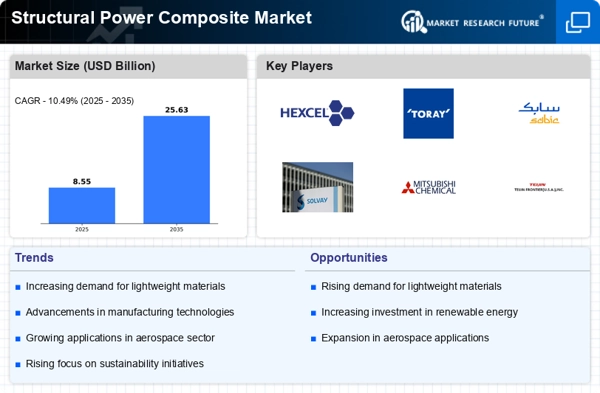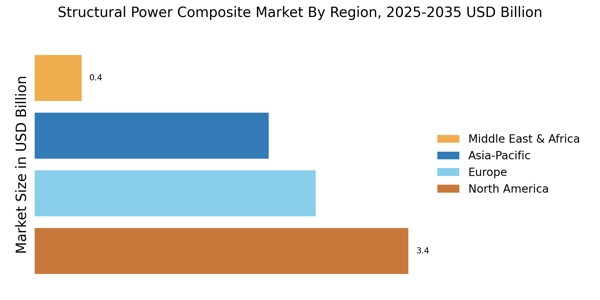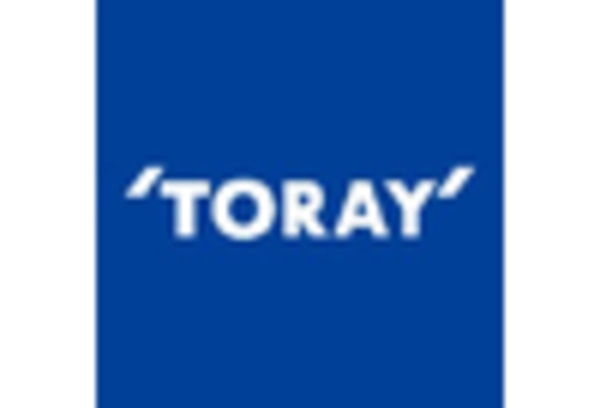Rising Demand for Lightweight Materials
The Structural Power Composite Market is experiencing a notable increase in demand for lightweight materials across various sectors, particularly in aerospace and automotive applications. As manufacturers strive to enhance fuel efficiency and reduce emissions, the adoption of lightweight composites becomes imperative. According to recent data, the aerospace sector is projected to witness a compound annual growth rate of approximately 5.5% through 2027, driven by the need for advanced materials that offer both strength and reduced weight. This trend is likely to propel the Structural Power Composite Market, as companies seek innovative solutions to meet regulatory standards and consumer expectations.
Increased Investment in Renewable Energy
The Structural Power Composite Market is poised to benefit from the escalating investments in renewable energy infrastructure. Wind energy, in particular, relies heavily on composite materials for turbine blades, which require high strength-to-weight ratios. Recent reports indicate that the wind energy sector is expected to grow at a rate of 8% annually, leading to a surge in demand for structural power composites. This trend reflects a broader commitment to sustainable energy solutions, positioning the Structural Power Composite Market as a critical player in the transition towards greener technologies. The integration of composites in renewable energy applications is likely to drive innovation and market growth.
Advancements in Manufacturing Technologies
Technological innovations in manufacturing processes are significantly influencing the Structural Power Composite Market. The introduction of automated production techniques and advanced curing methods has enhanced the efficiency and scalability of composite manufacturing. For instance, the use of 3D printing technology is gaining traction, allowing for the creation of complex geometries that were previously unattainable. This shift not only reduces production costs but also shortens lead times, making it more feasible for industries to adopt structural power composites. As a result, the market is likely to expand, with an anticipated growth rate of around 6% annually over the next five years.
Regulatory Support for Composite Materials
Regulatory frameworks are increasingly favoring the use of composite materials in various industries, which is likely to bolster the Structural Power Composite Market. Governments are implementing policies that promote the adoption of advanced materials to enhance safety and performance standards. For example, aviation authorities are encouraging the use of composites in aircraft design to improve fuel efficiency and reduce environmental impact. This regulatory support is expected to create a conducive environment for the growth of the Structural Power Composite Market, as manufacturers align their products with evolving standards and consumer preferences.
Growing Applications in Defense and Aerospace
The defense and aerospace sectors are increasingly recognizing the advantages of structural power composites, which are integral to the development of advanced military and civilian aircraft. The Structural Power Composite Market is likely to see substantial growth as nations invest in modernizing their fleets and enhancing performance capabilities. With the global defense spending projected to reach over 2 trillion dollars by 2026, the demand for lightweight, durable materials is expected to rise. This trend underscores the importance of structural power composites in meeting the rigorous standards of aerospace applications, thereby driving market expansion.


















Leave a Comment